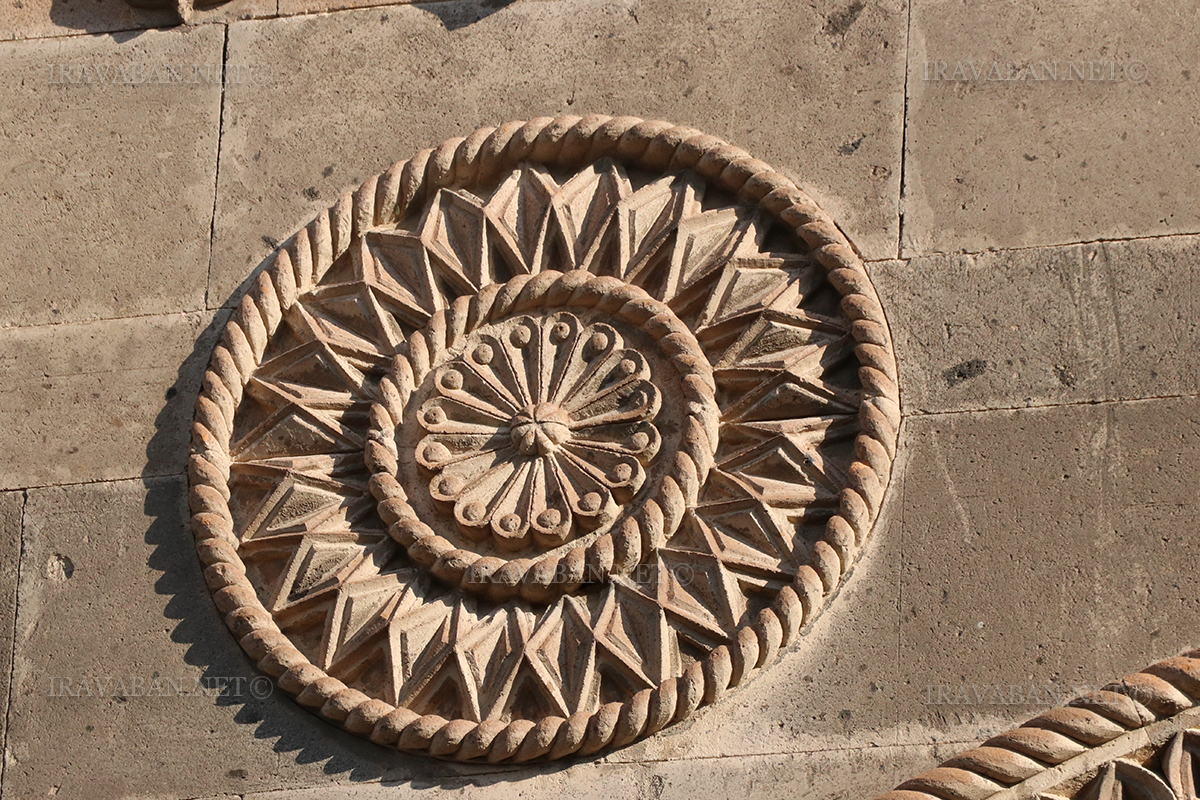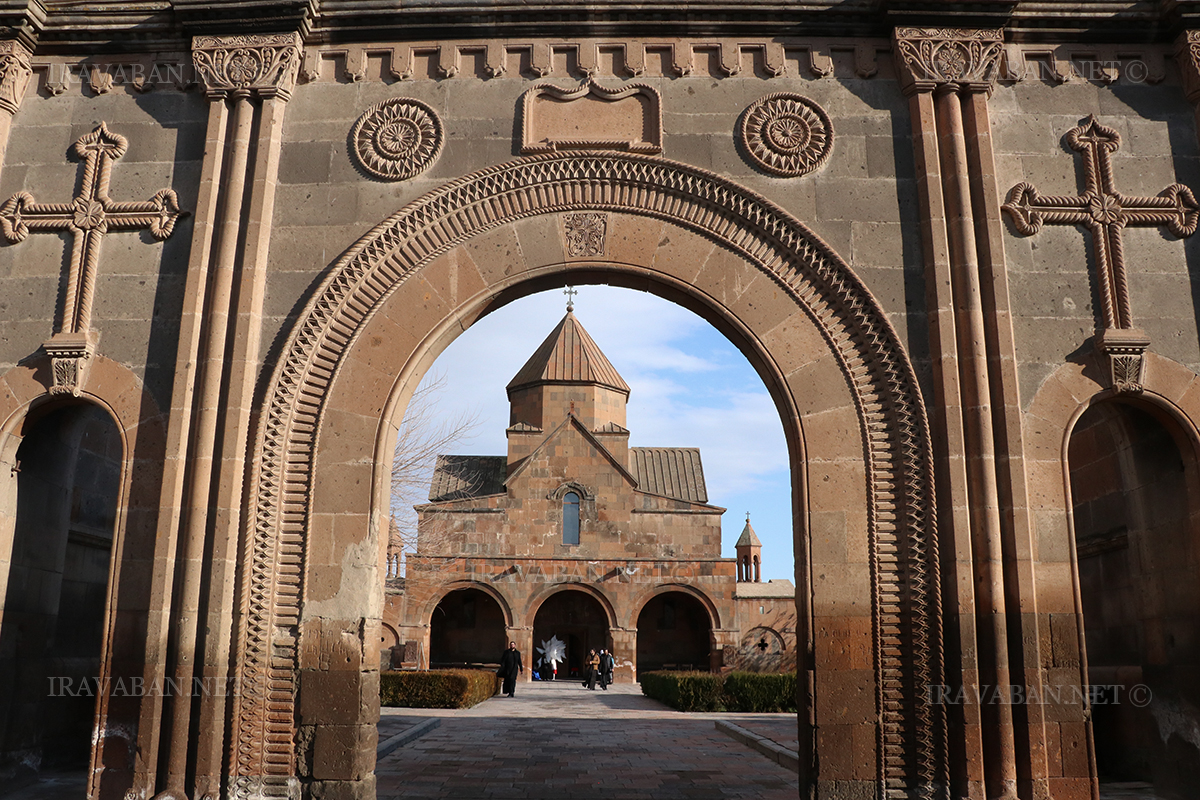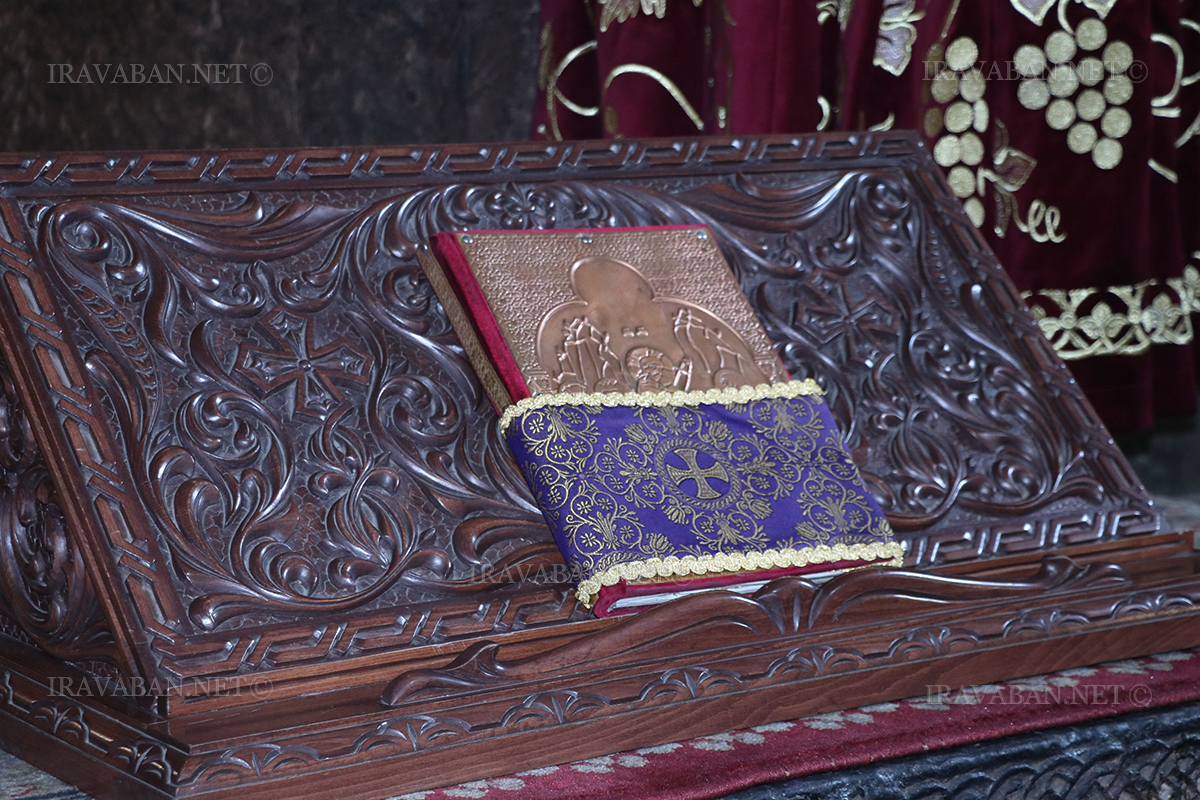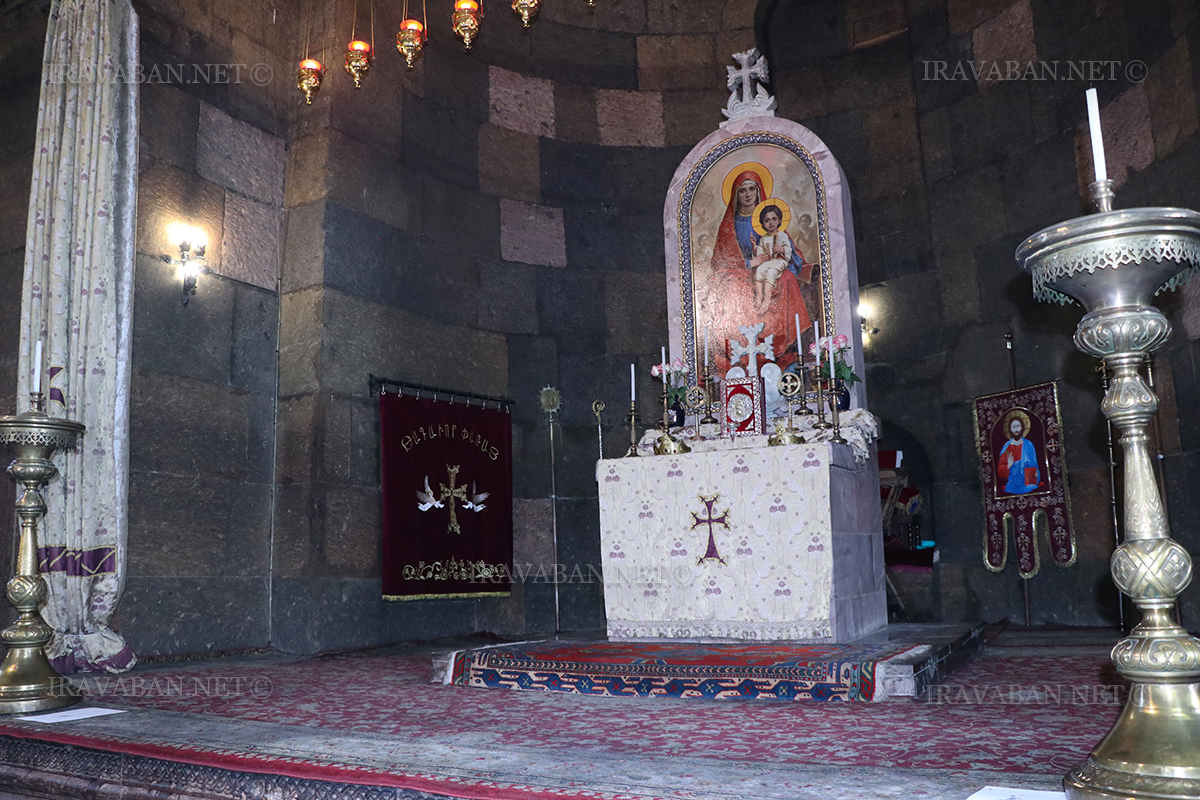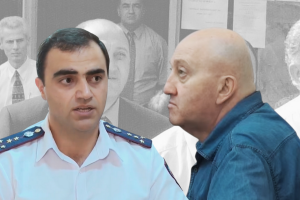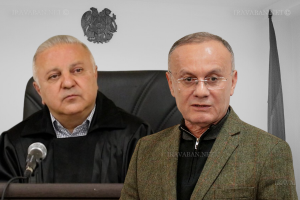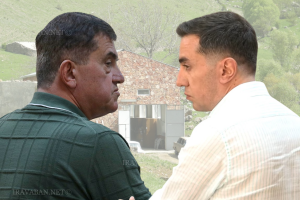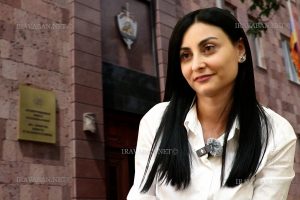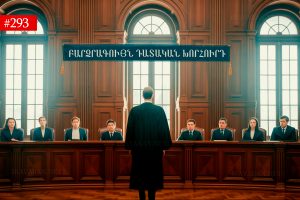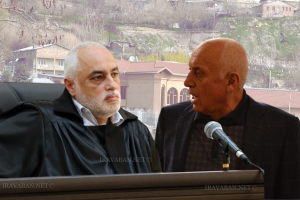The actual day of Christmas is 6 January, but from the previous day, 5 January, we have a candlelight vigil, which means the time to light the candles. That is, from that moment the light entered the world: Christ is that lamp, that light. Father Tigran Badiryan, Head of the Office of Ecclesiastical-Conciliar Structures of the Chancellery of the Mother See of Holy Etchmiadzin spoke about this within the framework of the “The Church and the Law” series of interviews, Iravaban.net referring
– Father Minister, will you please tell us how you passed and chose the religious life?
– The intention to become a clergyman came to me in the embodiment of a gospel message while reading the Gospel of Mark and the search for happiness brought me to church. As a result, I am an ordained clergyman now. I received my spiritual education at the Gevorkyan Theological Seminary, further, as a deacon and not a university student; I continued my life education and still try to learn from the older generation, as well as from the faithful and the higher clergy.
– What activities do you carried out currently? What is your function as a clergyman now?
– I am serving at the Office of Ecclesiastical-Conciliar Structures of the Chancellery, which is involved in organizing church meetings and recording their decisions and later compiling reports related to the implementation of those decisions. Under the direction and blessing of His Holiness, I have been in charge of this Office for three years now.
– Let’s talk about Holy Christmas. Christmas is one of the most important Christian holidays for us, if not the most important.
– If we put aside the long theological explanations of the Christmas sacrament, we can simply say that Christmas is a celebration of the presence of God in our lives, because today we too often hear about God, we often hear about Jesus Christ, but For the most part in our lives we do not feel his presence. That is, Jesus Christ was born once in time and is in eternity. Unlike civil holidays, which refer to a historical fact, the church celebrates its pavilion holidays and, in general, the feasts associated with the reign of Jesus Christ and God, not as a historical event, but as a present-day reality that Christ was born and appeared, good news for us and for you, to show that as long as the church exists, we all have the hope of salvation.
– Why is it so happened that the Orthodox, Catholic, Apostolic churches to celebrate Holy Christmas on different days, and what is the history of this?
– In fact, there is a problem of both evangelical and historical interpretations: our celebrating Christmas on 6 January and celebrating on 25 December by the Western Orthodox Church and the Catholic Church. First of all, until the third century, all the churches celebrated on 6 January, that is, the transfer to 25 December took place after the third century. Due to the interpretation of the Gospel passage, Zechariah, as high priest, who was the father of John the Baptist, when he heard the news of having a son, was shocked and we know that Jesus Christ and John the Baptist were 6 months apart and it is said that Zechariah was incense on the Day of Atonement, which was the seventh day of the seventh month, and after that Elizabeth, the mother of John the Baptist, became pregnant. When Elizabeth was pregnant and the Virgin Mary came to him and the fetus moved in Elizabeth’s womb, so to speak, he greeted the master who came in and recognized him․ Elizabeth said to the Virgin Mary, “Blessed are you among women!” There is a problem with these calculations, because they calculate that the time elapsed from the Feast of the Atonement to the birth of John the Baptist expires on 25 December, and we calculate that it expires on 6 January.
There is another problem. The Catholic Church celebrates 25 December, that is, according to the Gregorian calendar, and the Orthodox Church, although it celebrates on 25 December, but according to the Julian calendar and ours, the Gregorian calendar, Christmas Day is celebrated on 7 January. The Julian and Gregorian calendars are 13 days apart, and the Orthodox churches still adhere to the Julian calendar.
– We know that the Holy Christmas is preceded by the fasting period. Let us detail a little on this. How should Christians behave, how should they act, what food should they eat, how should it be observed, and what is the period of fasting, how many days does it last?
– In the church calendar, the half of the year: 156 days is the fasting period. We have three great fasts, which are almost 50 days: The Great Lent before the Holy Resurrection, Lent before the Feast of the Transfiguration and Lent before Christmas. But later, in full, with all the fasting days, non-celebrated days, only the Lent of the Holy Resurrection is left, which we call the Great Lent or the forty days Lent. The rest of the fifty fasting periods were divided into weekdays. Christmas Lent also has three weekly fasts. That is, three weeks and five days that is fasting. In general, all ecclesiastical mysticism is based on the simple fact that we do not just remember history, we live in the presence of Jesus Christ. We believe in the living God, not in the one who once acted and now has no role in our lives, but in the one who is still present in our lives and is still in living contact with us.
– Can you tell us how Christmas is marked, how is it celebrated, when does the celebration start: In the evening on 5 January or in the morning on 6 January?
– The reality of Christmas took place in the evening, according to the story, and the shepherds, the magicians who had come, had already received that good news on the next day. The actual day of Christmas is considered to be 6 January, but we have candlelight from the previous day, 5 January, which means the time to light the candles. That is, from that moment the light entered the world․ Christ is that lamp, the light that entered our world and enlightened us all, and already since the light entered our world and the groom is already with us and we give the good news to everyone in the presence of that groom, rejoicing until 6 January.
There is another difference between us and the Catholic Orthodox Church in that we celebrate the birth and baptism of Jesus Christ on the same day, 6 January, and they celebrate on separate days.
– We know also, that in this period very often the order of blessing household is conducted. Will you also talk about why that particular period is especially chosen?
– According to the Mashtots ritual book, there are two household blessings in general: after the Holy Resurrection and after Christmas. These are both messages of the Lord’s presence that are given to us and the Lord’s presence in our homes first and foremost. The Armenian Church especially considered the family as a home, not only the stone building, even in the Gospel, in the Old Armenian translation, when Jesus Christ commands the apostles to enter people’s homes, he implied the family.
– Father Tigran, we are conducting our interview at St. Gayane Church. Please give a little detail about the church and its architecture.
– St. Gayane Church is one of our ancient sanctuaries. The current building is a four-aisled basilica, but since 301, by the order of St. Gregory the Illuminator, a chapel for the virgin Gayane was built here, also in the direct presence of Trdat the Great, his sister Khosrovdukht and Queen Ashkhen. After that, during the reign of Sahak Partev in 395, the chapel was renovated again and during the reign of Catholicos Ezr Parajnakert in 630, it was decided to demolish the chapel and build a monastery complex with hewn stones. The construction of St. Gayane monastery began in 630.
We see the next mentioning in the story of Arakel Davizhetsi, who, presenting the realities of the 17th century, says that only the columns and the southern and northern walls remained from St. Gayane Monastery. In 1662, St. Gayane Monastery was completely renovated by Catholicos Philip Aghbaketsi, and later new buildings were built during the reign of Simeon Yerevantsi, and the last ones were built in 1910 and 1980.
Below the main altar of St. Gayane Church, at the entrance to the side of the depository, is St. Gayane’s tomb. Our church has many testimonies about the healing abilities of St. Gayane. Of course St. Gayane is one of the saints of our church and the intercessor before our Lord Savior and Jesus Christ and with her life she testified to the firmness of her values. She showed the importance of her religion with her life, not even being afraid of being martyred or dying.
The walls of St. Gayane breathe with prayer, every stone carries a great blessing, because for more than 1100 years prayers have been heard here, people have found comfort and received the answers to their prayers through and inside the walls of this monastery.
– What is your message to the society, to the Christians, on the occasion of Christmas?
– My prayer is that our people will finally recognize the living Lord Jesus Christ, get rid of all kinds of superstitions and finally be the true bearer of the values that have kept us for centuries, because we have many formalities, but little content. I pray that the content will increase so that our believers will not only follow the light of the candlelight, but also carry the gospel of Jesus Christ, so that we may be a people who read the history of our Holy Book, to be a people who know our values a people who cannot be defeated and brought to their knees, because people with values are always purposeful and always know what they live for and what they fight for.


